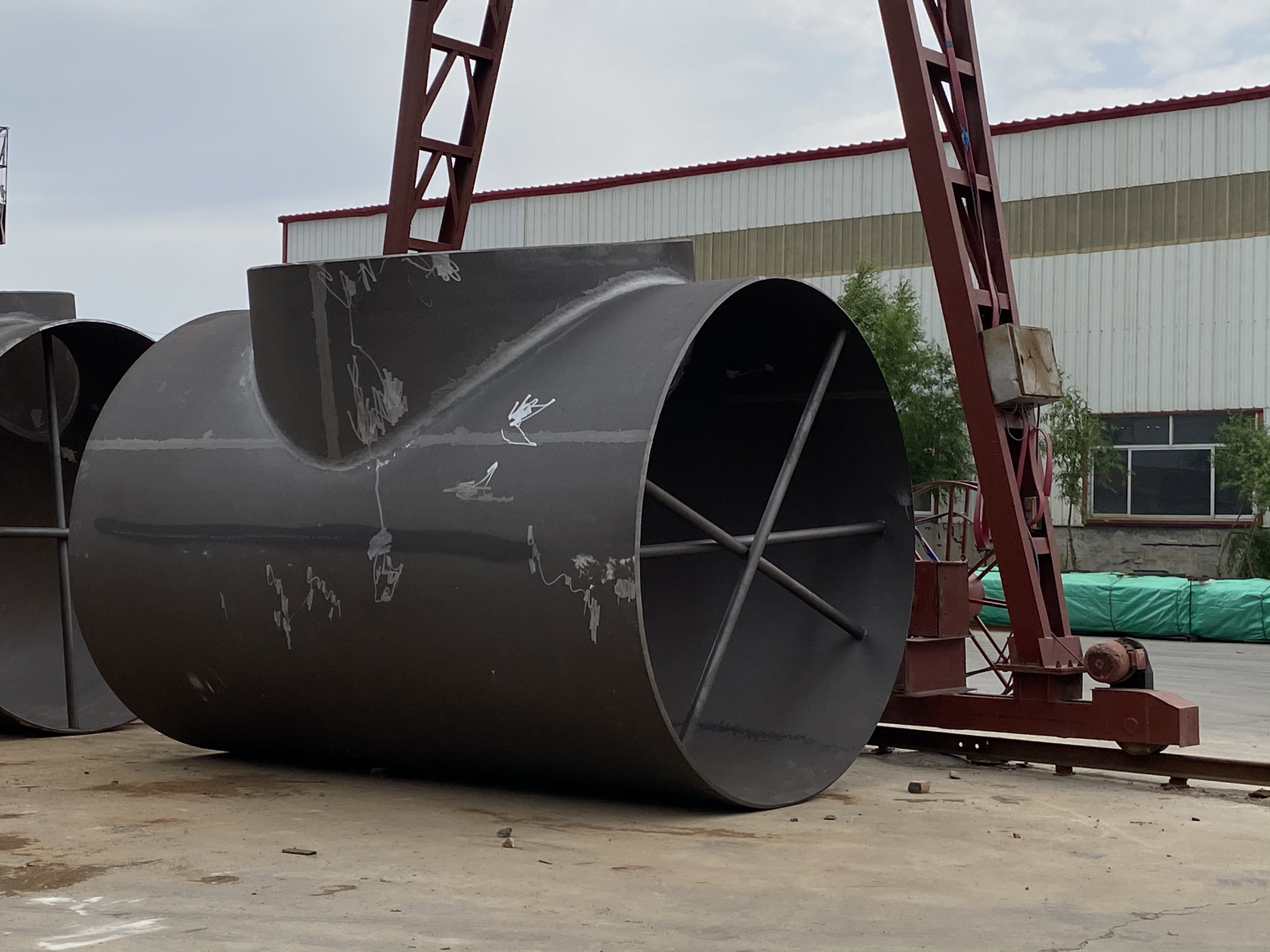NEWS
Cast iron tee process and technical requirements
- Categories:News
- Author:
- Origin:
- Time of issue:2022-09-20 09:35
- Views:
(Summary description)Cast iron tee materials are cast iron, stainless steel, alloy steel, calcined cast iron, carbon steel, and so on. The connection modes with the pipe are direct welding (the most common way) flange connection, threaded connection with socket type connection, etc. A pipe fitting is commonly used in pipe installation for connecting pipes outside the bend.
Cast iron tee process and technical requirements
(Summary description)Cast iron tee materials are cast iron, stainless steel, alloy steel, calcined cast iron, carbon steel, and so on. The connection modes with the pipe are direct welding (the most common way) flange connection, threaded connection with socket type connection, etc. A pipe fitting is commonly used in pipe installation for connecting pipes outside the bend.
- Categories:News
- Author:
- Origin:
- Time of issue:2022-09-20 09:35
- Views:
Classification of cast iron tees
Classification of cast iron tee: reduced tee, Y tee, high-pressure tee, etc
1, the material is divided into carbon steel, cast steel, alloy steel, stainless steel, copper, aluminum alloy, etc.
2, the production method can be divided into pushing, pressing, forging, casting, etc.
Cast iron tee process
Cast iron tee is used for the pipe branch of a pipe fitting. For making cast iron tees with seamless tubes, hydraulic bulging and hot pressing are commonly used at present.

A. Hydraulic bulging
Hydraulic expansion of cast iron tee is a forming process that compensates for the axial expansion of the branch pipe by metal material. Hydraulic press, the process is to use an * * will be equal and cast iron tee diameter of tube billet inside the injection liquid, through the two horizontal sides of the hydraulic cylinder synchronization of the motion of tube billet, billet after squeezed smaller volume, a smaller volume of liquid with the tube billet inside the tube billet and pressure, when the cast iron tee branch pipe bulge out to the pressure, Under the dual action of liquid pressure in the side cylinder and the billet, the metal material flows along the inner cavity of the mold and expands out the branch pipe.
The hydraulic bulging process of cast iron tee can be formed once, and the production efficiency is high. The head and shoulder wall thickness of cast iron tee is increased.
B. Hot pressing
Cast iron tee hot pressing is to flatten the pipe billet larger than the diameter of cast iron tee to the size of cast iron tee diameter, and open a hole at the part of the stretching branch pipe; The billet is heated, put into the forming die, and loaded into the punching die of drawing branch pipe; Under the action of pressure, the billet is radial compressed, and in the process of radial compression, the metal flows to the branch pipe and forms a branch pipe under the tension of the die. The whole process is formed by the radial compression of the billet and the stretching of the branch pipe. Different from the hydraulic expansion cast iron tee, the metal of the hot-pressed cast iron tee pipe is compensated by the radial movement of the pipe billet, so it is also called the radial compensation process.
Due to the use of heated pressed cast iron tees, the tonnage of equipment required for material forming is reduced. Hot pressed cast iron tee has wide adaptability to materials, suitable for low carbon steel, alloy steel, and stainless steel materials; Especially for cast iron tees with large diameter and thick walls, this forming process is usually adopted.

Cast iron tee technical requirements
Cast iron tee pipe fittings are made in accordance with certain technological methods and principles in production to ensure good product quality and guarantee actual production and processing. The geometric dimensions include outer diameter, inner diameter, and wall thickness.
To bend pipe fitting as a pour, if do long radius elbow, to first select the specifications, put forward the pipe material. It can be calculated by theoretical calculation, and then cut off with the length as the fixed size. Finally, the material is hot-pushed. The pushing process is a process of expanding the diameter and bending the belt. There is support at the back, and the cutting pipe section is put into the mandrel. There is a memorial arch behind to fix the mandrel. There is a car in the middle, some cars through hydraulic transmission, some through a mechanical transmission that is, the lead screw drive, and then push the car forward. The trolley pushes the tube along the mandrel, there is an induction ring outside the mandrel, the tube is heated, heated, and then the trolley pushes the tube down, on the processing of a good. After pushing, the elbow should be reshaped in this hot state. The diameter expansion rate, through theoretical calculation, is the general diameter expansion rate between 33% and 35%, backward. The general expansion rate of the short radius of 219mm is 50%. After selecting the raw material, according to the elbow specifications, and then considering the radius of curvature, for example, 90° elbow, through its curvature can be calculated how long the material can be processed out of 90° elbow.
The cast iron tee process is basically the same. According to the different specifications of cast iron tee pipe fittings. After blanking, sandblasting should be done first, and the oxide sheet on the surface should be removed before forming. Forming using hydraulic bulging forming. There is a mold, the bottom of the mold is straight, and the upper side has a flange hole. Put the pipe into the pipe, the pipe with hydraulic cylinder fixed, both sides filled with liquid bulging inward, the tube squeezed into the "convex" shape, and then cut the bulge from the appropriate position, also into the groove. It is shot peened twice. Because of the process, there is work hardening, so also needs heat treatment. The production process of cast iron tee pipe fittings is such a situation.
Scan the QR code to read on your phone





Tel: +86 157 2731 7311
Tel: +86 157 2731 7311
E-mail: sales@whsteelfittings.com
Factory Add:Zhenggang Industrial Park, Yanshan County, Cangzhou City Hebei Province, China.




Tel: +86 157 2731 7311
Tel: +86 157 2731 7311
E-mail: sales@whsteelfittings.com
Office Add:No.8013 FuHuaHongYan Building,HongYan South road,Chaoyang District ,Beijing ,P.R.CHINA
SOCIAL MEDIA
Copyright © 2020 WH-STEEL 冀ICP备20009811号 Powered by www.300.cn




